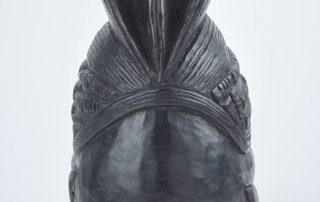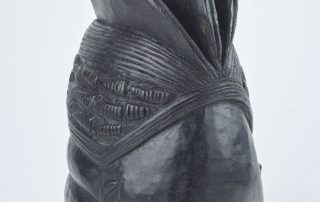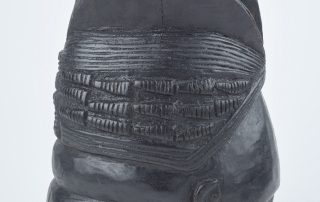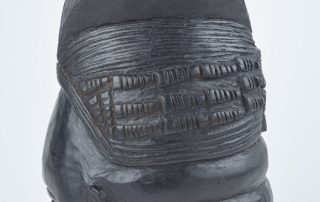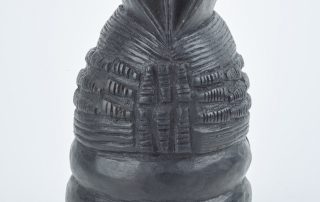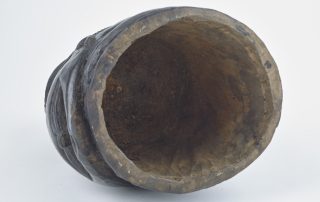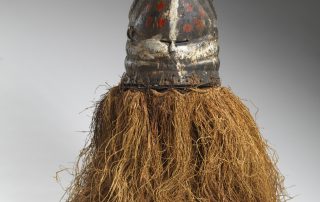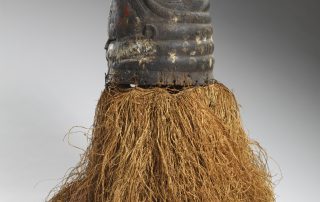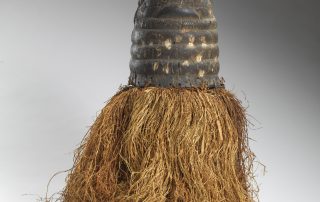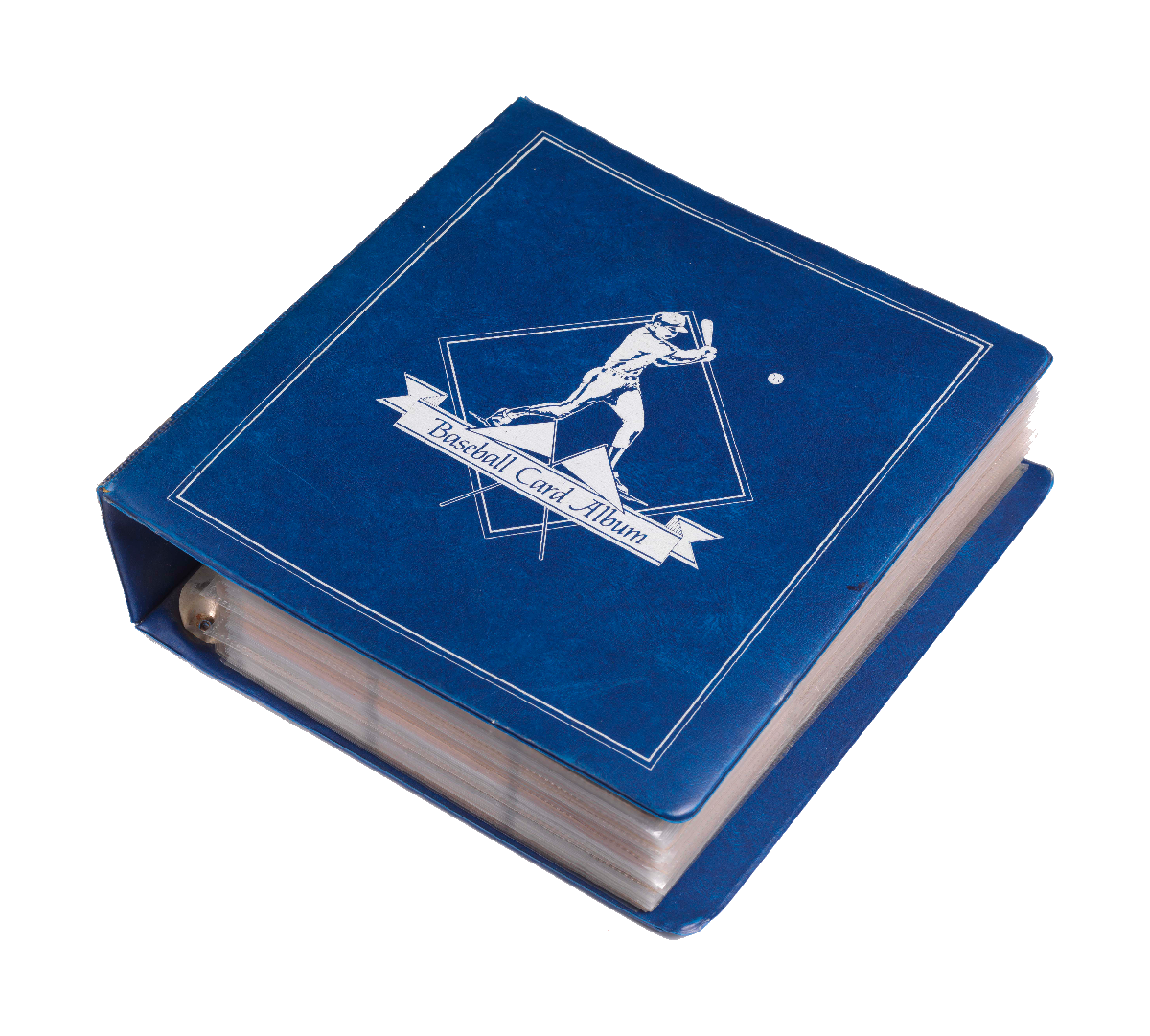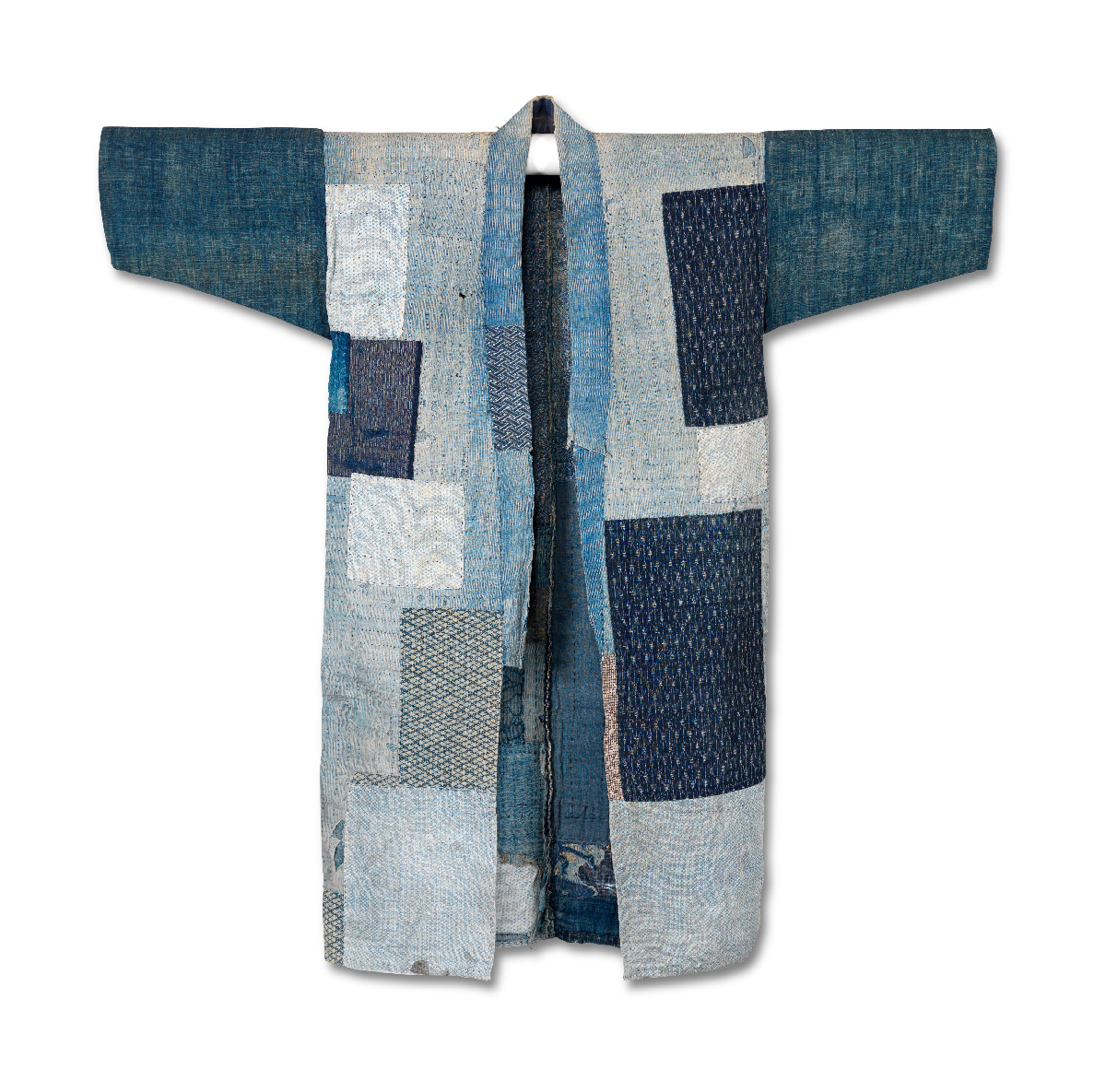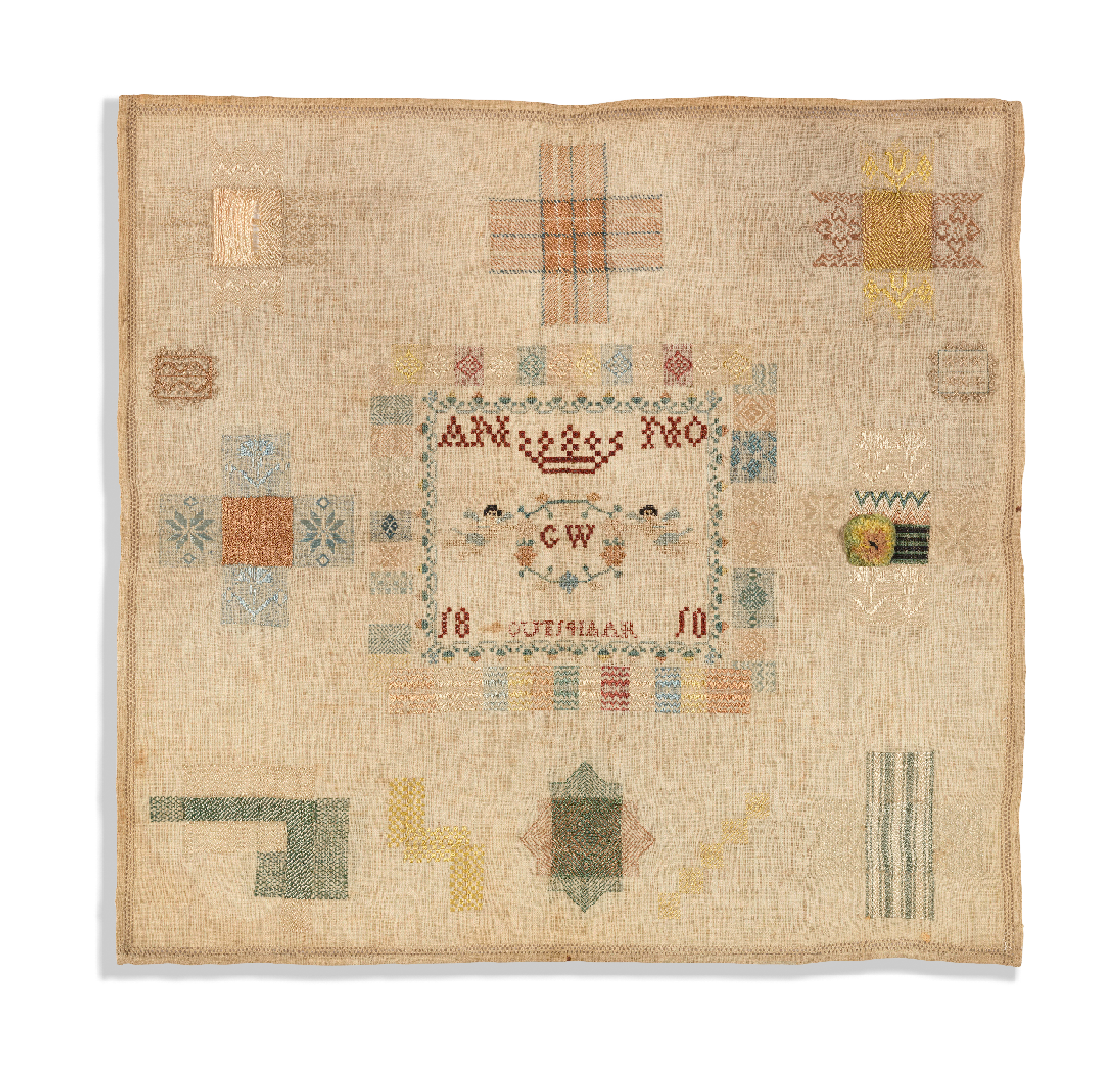Sowei and Gonde Masks
Sowei Mask, ca. 19th century
Unknown maker, Vai, Liberia
Wood with stain, 16 1/8 × 7 1/4 in. (41 × 18.5 cm)
Repaired, date(s) unknown; conserved, 2021
Courtesy the American Museum of Natural History, Division of Anthropology, New York City, Prince Momolu Massaquoi, 17/160 A
Gonde Mask, ca. 1930s
Unknown maker, Mende, Sierra Leone
Wood, pigment, and raffia, 30 × 13 × 16 in. (76.2 × 33 × 40.6 cm)
Collection of Gary Schulze
These two varieties of masks are worn by women leaders in the Sande society, which initiates girls into womanhood among the Vai and Mende people in Western Africa. The formal similarities between the Sowei and Gonde masks are no accident. Worn and danced during ceremonies, the Sowei mask embodies the spirit of the society, representing female knowledge. When Sowei masks are damaged or fall into disuse, they may either be repaired or divested of their sacred status with the addition of paint, turning them into Gonde masks such as the example shown here. This material transformation carries symbolic significance: when danced, the Gonde serves as a comic foil to the Sowei. The caretakers of Sowei masks are prompted to consider repair or embrace change, challenging staid perceptions of conservation as a strictly restorative process.
Read More

Click thumbnail images to view slideshow
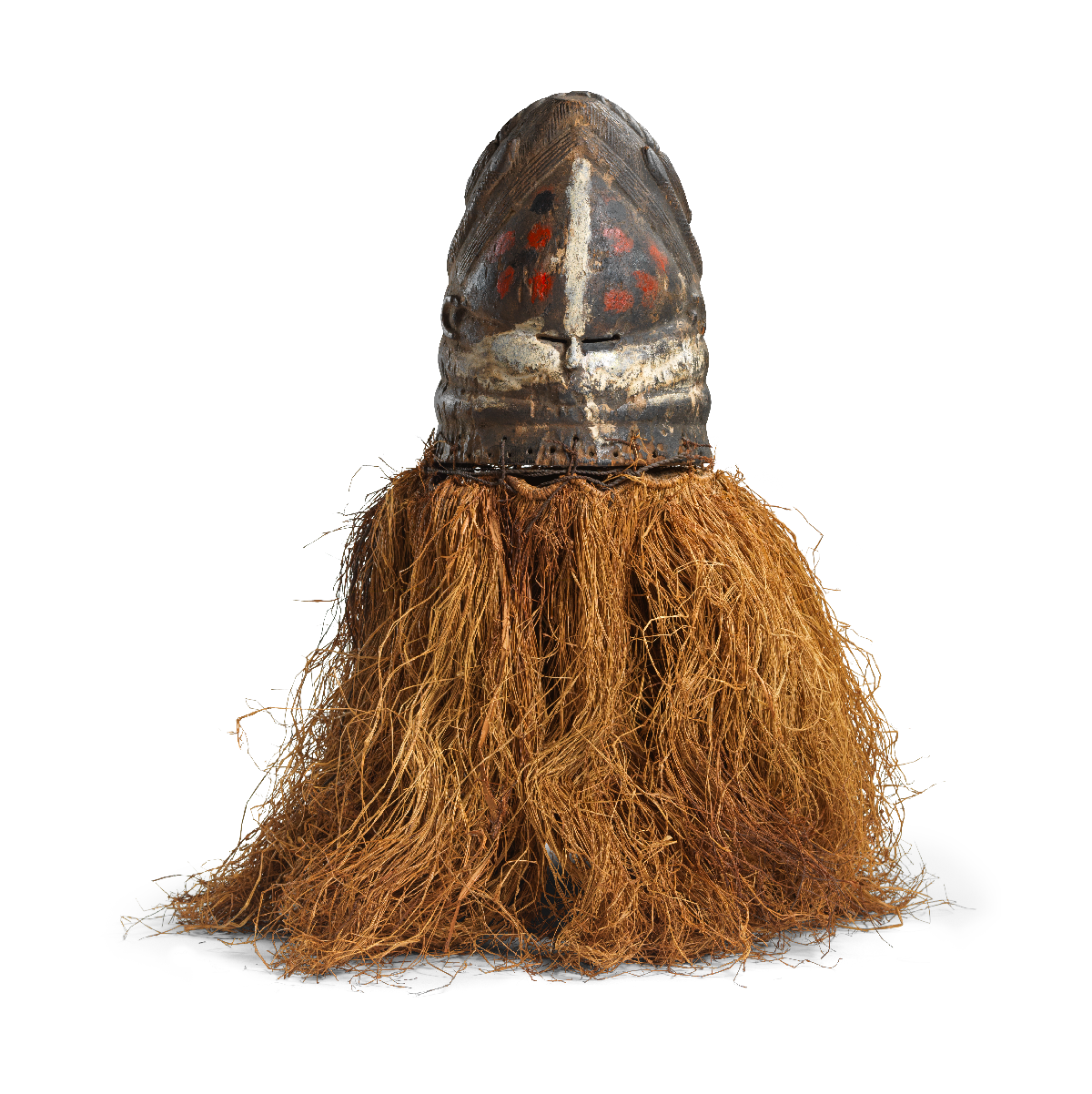
Click thumbnail images to view slideshow
See other items in What is Conservation?


